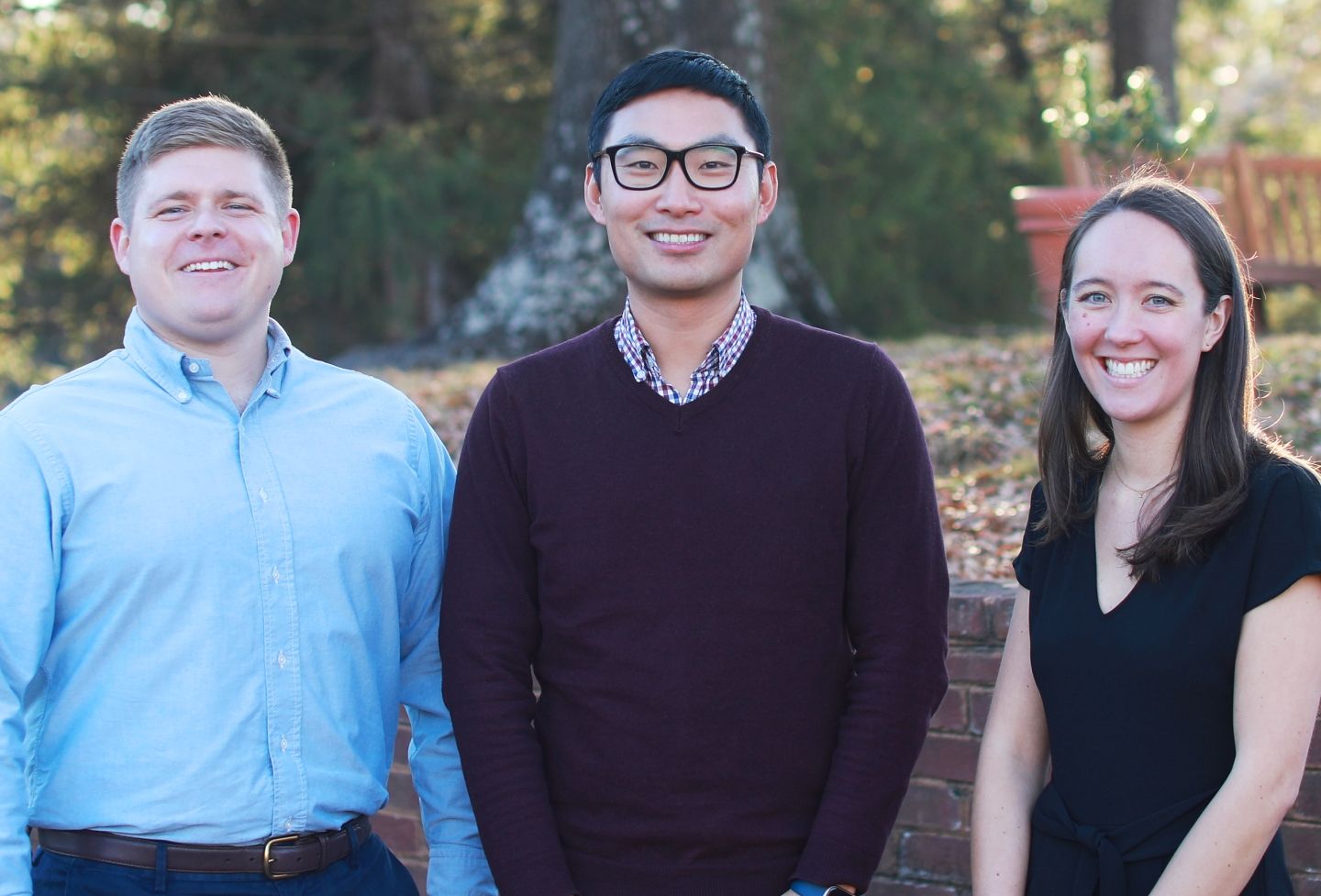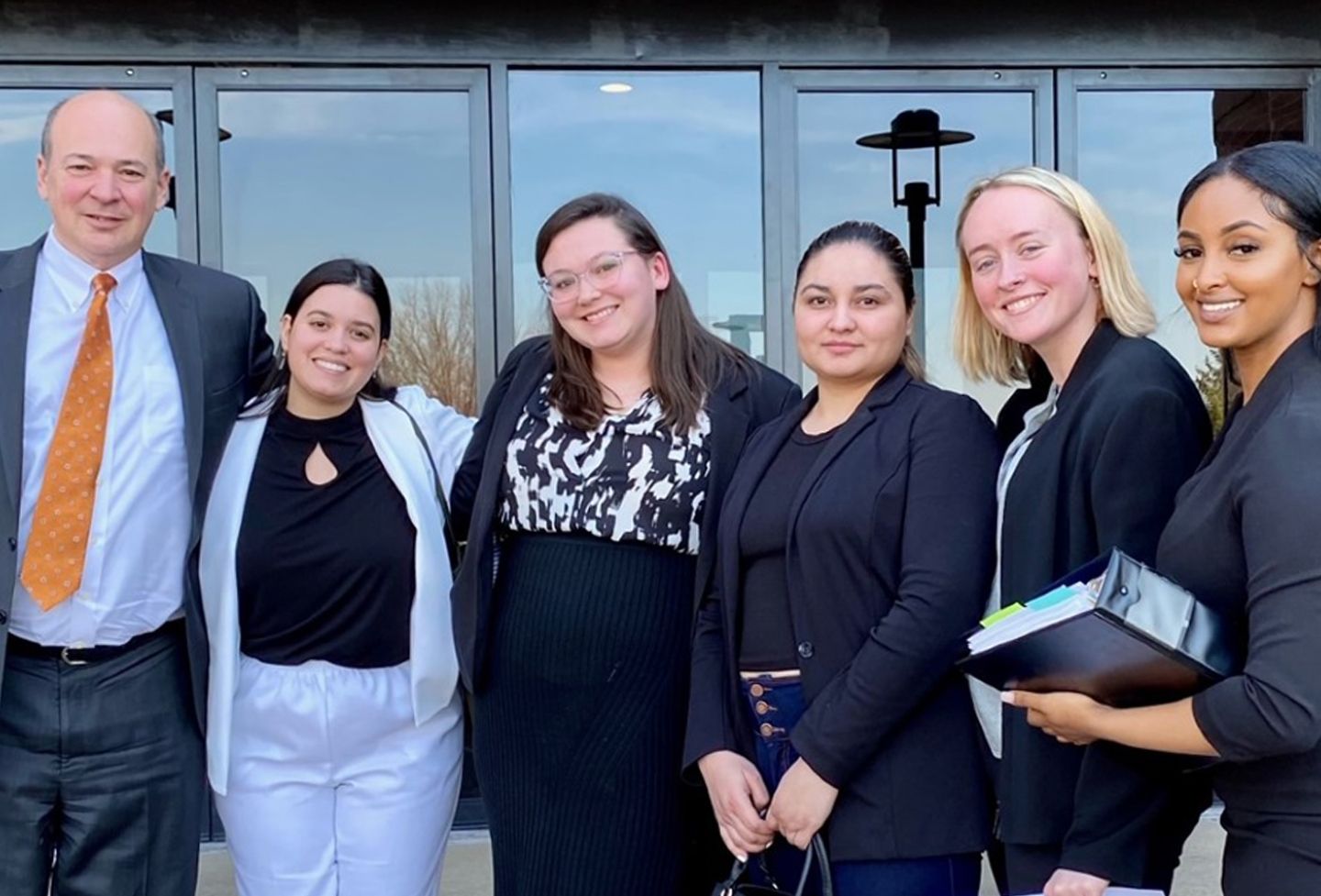Immigration Reforms Have Momentum, Panel Says

The recent enactment of legislation designed to fund a fence across the southern U.S. border has not stalled lawmakers and immigrant rights’ advocates who are seeking alternate improvements to the nation’s immigration policies, said a panel of experts Oct. 25. The event launched the Law School’s new Immigration Program.
U.Va. law professor David Martin, who served as the moderator of the symposium, said there were three elements in all of the recent immigration reform legislation—better enforcement, a guest-worker program, and amnesty, or as many refer to it, “a path to citizenship.” Martin noted that different parts of the government push certain elements. “The House bill emphasized the first—enforcement of a variety of types…the president emphasized the second element, guest-workers…and a number of advocacy groups wanted to be sure that somewhere in the mix would be the third element, a path to citizenship and amnesty. The Senate pulled all three of the elements together and with a lot of pulling and hauling and various compromises, they’ve put together what has been called comprehensive reform.
“In my view what’s really critical [to reform] is interior enforcement, particularly at the workplace,” Martin said, which means having employers check their workers’ immigration status before they hire. Martin doubted the viability of the president’s proposed guest-worker program. “Historically in this country and in other countries, proposals for temporary admissions for work have been very unsuccessful at keeping the stay temporary.”
Doris Meissner, a former commissioner of the Immigration and Naturalization Service and now a senior fellow at the Migration Policy Institute, has been involved in a project drafting proposals for immigration reform.
“We [need to] break this incredible stalemate that we are in,” Meissner said. The House is looking at an enforcement-first approach, Meissner explained, while the Senate is taking a comprehensive approach by addressing all elements of immigration reform.
The enforcement-first approach “looks at the United States and this issue of illegal immigration as a question fundamentally of national sovereignty, very much a question of national security, and sees the fact that this illegal immigration is taking place as a deeply troubling breakdown in the rule of law.” In turn, this causes people to be frightened and think “the first thing we must do is accomplish law enforcement, restore control over our borders, and get back to a place where we’re not experiencing illegal immigration.”
In reality, the legislation establishing the 700-mile-long fence across the United States-Mexico border does not provide enough funding to fulfill the bill’s claim, and gives the executive branch extreme flexibility in how to proceed with fencing measures. “It’s become reduced to an election slogan rather than a serious [advancement] of the enforcement approach.”
The comprehensive approach suggests “you’re not going to be able to enforce the law unless you address the deeper reasons that this illegal immigration is occurring, and it sees these deeper reasons as reasons that are rooted in the economy, that are rooted in our job market,” she said. The approach suggests, “Let’s take this law of supply and demand that’s working and recognize that it’s a market, regulate that market, and acknowledge that markets work well when regulated, but not when they’re laissez-faire.”
However, “these [two approaches] have pretty much been pushed to their logical conclusions and there are deep flaws in both,” Meissner said. She suggested certain factors could further change the legislative landscape, including the mid-term election and the possible emergence of new ideas for reform.
Meissner pointed to a Migration Policy Institute bipartisan report that made specific recommendations on how to reform immigration while recognizing its reality in the economy. “We are an aging society that is no longer creating… sufficient numbers of younger workers” for the number of jobs that the healthy economy is creating, she said. “Immigration actually provides a way for us to cushion ourselves from the effects of aging.” Furthermore, highly skilled immigrants fill a gap in math, science, and technology skills that many native-born Americans lack.
“Fundamentally what we are calling for is a system that is redesigned, bottom-up,” she said. “Whatever you do on the border will never be enough.”
Employers also play a key role in the immigration debate, explained Gerri Ratliff, chief of the U.S. Citizenship and Immigration Services Verification Division in the Department of Homeland Security.
Currently, about 11,000 employers provide immigrant worker information to the division’s pilot program voluntarily. “Some do it for patriotic reasons. They think that anything else they can do to make sure their workforce is legally authorized is the right thing to do for the country….[for some], politics aside, it makes sense, they want to know they’re not going to get an enforcement audit down the road,” she said. “[Employers are] more and more worried about their workers having social security number mismatches.” Some state laws require employers or state contractors to join the federal pilot employment verification program.
In 2008 the Real ID Act will “require Departments of Motor Vehicles to verify the information that driver’s license applicants are presenting as a part of their application.” The states’ DMV offices will check with Ratliff’s department to ensure that the people receiving driver’s licenses are U.S. citizens.
Ratliff said DHS is planning for forthcoming legislation mandating employer cooperation in immigrant-worker verification, which will be “very specific” and outline a step-by-step approach for employers and her department to follow. The legislation may add new components to the existing program, such as allowing different ways of verifying the current workforce, which could result in a “huge spike in the number of queries” Ratliff’s office will receive. In addition, the government may charge employers a fee to report their information.
“It’s basically been a sleepy little pilot program with just a few thousand employers for several years and now suddenly, as Doris mentioned, people are calling it the lynchpin of interior enforcement,” she said. “We really have an opportunity to create a program that we can be proud of.” Both the House and Senate bills include a rapid ramp-up of the program, requiring adding millions of employers to the database in a year to 18 months.
Undocumented immigration “is an issue with a long pedigree,” said immigrant rights’ advocate Marshall Fitz ’98, director of advocacy for the American Immigration Lawyers Association.
It is important to understand the history of the recent debate, Fitz said. In the summer of 2005, President George Bush revisited the immigration issue following a respite after 9/11. Fitz and others thought the Senate Judiciary Committee would set the tone for the debate; however, the Judiciary Committee was preoccupied with appointing two new justices to the Supreme Court and the National Security Administration wire-tapping probe. Subsequently, meetings on immigration were pushed back until early 2006. This allowed the House an opportunity to enter into the policy debate. In December of 2005, the House passed legislation, without debate, “one of the most restrictive, punitive immigration bills” in 50 years. The legislation included building the fence, penalizing unauthorized immigrants and employers, and adding a host of border security measures. Fitz and others decided that the best way to defend against the House bill was to push for “an incredibly strong, progressive bill on the Senate side.”
Members of the Senate had already planned to introduce their own bills, so advocates for progressive immigration reform participated in the mark-up process of those bills. Fitz described the process as “grueling” but ultimately “extremely rewarding” because “at the end of the day everything fell our way.” Fitz noted one of the turning points in getting the bill through was when the immigrants and their supporters rallied in Los Angeles.
“We saw half a million people out in the streets and they finally got it right; they had American flags instead of Mexican flags,” which turned public perception against them in earlier rallies. Democratic California Sen. Dianne Feinstein, who was impressed with the rallies, proved to be a decisive vote in their favor. The bill that passed out of committee granted reform advocates much of what they wanted. Further lobbying of both Republicans and Democrats helped the bill pass in the full Senate.
Fitz concluded by explaining why reform advocates should support the new bill, S-2611, at least in the context of the current Congress. Although the bill is not perfect, people should not forget its strategic purpose, he said. “It contained provisions that the House would never swallow, and so it succeeded in forestalling a movement on H.R. 3447 in a better way than we ever could have hoped for, to the point where the House refused to even sit down and negotiate the bill,” he said.
However, the provision calling for a fence was introduced as a separate bill that passed the House and Senate and was signed by the president just before Congress adjourned for the election. By stalling the full House bill, reform advocates expect to be better placed to promote a comprehensive reform approach after the elections. “We will eventually have comprehensive immigration reform,” Fitz said. “The American public is much more pragmatic than we give them credit for and at the end of the day the polling suggests they really do get it and they really do embrace a comprehensive approach.”
Founded in 1819, the University of Virginia School of Law is the second-oldest continuously operating law school in the nation. Consistently ranked among the top law schools, Virginia is a world-renowned training ground for distinguished lawyers and public servants, instilling in them a commitment to leadership, integrity and community service.


